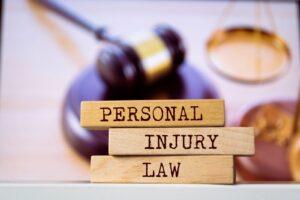
What Is a Brain Injury?
A brain injury can be any sustained neurological disease or injury to the brain that affects or interrupts how the brain functions. Some brain disorders, like Alzheimer’s disease and Parkinson’s disease, are caused by degeneration of the brain cells, which can injure the brain.
There are different kinds of brain injury. Some brain injuries occur before or during birth. This type of brain injury can occur in different ways. For example, a child could inherit a brain condition from a parent or suffer some sort of trauma to the brain during childbirth.
However, most brain injuries occur during life. These can be categorized as:
- Acquired Brain Injury (ABI)
- A brain injury that occurs after you are born is an Acquired Brain Injury (ABI). The Brain Injury Association of America defines an ABI as “an injury to the brain that is not hereditary, congenital, degenerative, or induced by birth trauma.” When an infant in the womb is exposed to alcohol and suffers with Fetal Alcohol Spectrum Disorder (FASD) after they are born, this is sometimes considered an ABI. An acquired brain injury can occur to anyone—child or adult.
- Traumatic Brain Injury (TBI). A traumatic brain injury (TBI) is defined as any alteration of brain function or evidence of pathology that is caused by an external force or trauma. Traumatic impact injuries can be defined as:
- Open. The external force or object (i.e., bullet or knife) penetrates the brain.
- Closed. The impact to the brain is non-penetrating, such as might occur from a blow to the head or impact from a fall.
- Non-traumatic. Non-traumatic brain injuries are brain injuries caused by internal factors, such as:
- Lack of oxygen
- Exposure to toxins
- Pressure from a tumor.
- Infection or disease (meningitis, encephalitis)
- Stroke (interruption of blood flow to the brain)

How Do Brain Injuries Occur?
The most common types of brain injuries occur from:
- Falls. Almost 48% of TBI injuries are from falls, which account for nearly half of all TBI-related hospitalizations.
- Gun-related events. The most common cause of TBI-related death in the United States is suicide with a firearm.
- Motor vehicle crashes. Approximately 13.2% of TBI injuries are suffered in car accidents.
- Assaults. More than 17% of TBI injuries are the result of being struck by or against something. More than 8% are the result of a direct assault.
Although anyone can suffer a traumatic brain injury at any time and for a variety of reasons, there are certain categories of people who, statistically, are more likely to experience TBI. According to the Centers for Disease Control and Prevention, these include:
- Racial and ethnic minorities
- Military service members and Veterans
- Homeless persons
- Those in correctional or detention facilities
- Survivors of domestic violence
Contact our Kansas city personal injury lawyers now.

What Are the Symptoms of a Brain Injury?
Traumatic brain injuries affect every person differently. Symptoms may depend on the location of the injury on the brain, the severity of the impact, the cause of the injury, and the nature and extent of the resulting health problems. For example, an open injury from a penetrating trauma is more likely to affect a person’s physical movement, whereas a closed injury may only affect the person’s behavior. Likewise, someone who experiences a mild TBI, like a concussion, may experience only short-term symptoms for a few days or weeks. But someone who experiences a moderate or severe TBI may have much more serious symptoms that are chronic and long-term.
Depending on these and other factors, when a brain injury occurs, it generally causes symptoms associated with one or more ways in which a person functions, including:
- Behavior. Brain injuries can have significant effects on behavior, depending on the part of the brain that is injured. Each side of the brain is divided into four “lobes.” These include:
- Frontal Lobe. The front of the brain, or the “frontal lobe,” is the part of the brain that regulates emotions and impulses. When this part of the brain is injured, the person may become unable to control their emotions and may act impulsively when their emotions take over. They may become self-centered and unable to view situations from someone else’s perspective. Frontal lobe injuries may cause the person to become angry more easily. With less self-awareness, the person may have less ability to control their anger and may become suddenly violent.
- Temporal Lobe. The temporal lobe controls a person’s ability to hear, understand language, recognize and identify familiar objects or faces, remember names, and process or remember information.
- Parietal Lobe. The parietal lobe is responsible for the ability to sense physical things like pain, touch, temperature, and pressure against the body. It also affects a person’s special awareness and the ability to sense how far away an object is located. Damage to the parietal lobe may also affect the ability to read and write or count numbers
- Occipital Lobe. The occipital lobe, located at the back of the brain, mainly controls vision and one’s ability to recognize objects and see or distinguish colors.
In addition to these four lobes on each side or “hemisphere” of the brain, there are two other parts of the brain that serve vital functions. These include:
- Cerebellum. The cerebellum is located at the back and bottom of the brain. It is largely responsible for controlling balance, muscle coordination, and the sense of movement and direction.
- Brain Stem. The brain stem is what connects the brain to the spinal cord. This area of the brain controls various body functions that are necessary for life, including:
- Blood pressure
- Circulation
- Breathing
- Digestion
- Sleeping
- Cognition. Brain injuries may cause cognitive issues, including:
- Difficulty thinking clearly
- Difficulty problem-solving
- Inattention
- Inability to follow directions or complete tasks
- Poor concentration
- Memory loss
- Diminished motivation
- Poor judgment
All of these symptoms, of course, can also affect one’s behavior.
- Physicality. Many brain injuries directly affect a person physically and can diminishing functions like:
- Ability to move (paralysis)
- Balance
- Sense (taste, smell, vision, hearing)
- Speech
Brain injuries also cause physical reactions, like:
- Seizures
- Headaches
- Body pain and fatigue
- Chemical and hormonal changes
- Psychology. Brain injury can have short- and long-term effects on a person’s emotional stability, which can cause:
- Depression
- Anxiety
- Stress
- Panic attacks
Because there are different kinds of brain injuries that can have a variety of causes and directly affect specific areas of the brain, each of which controls a variety of functions, every brain injury can present multiple symptoms and may be different for each person.





